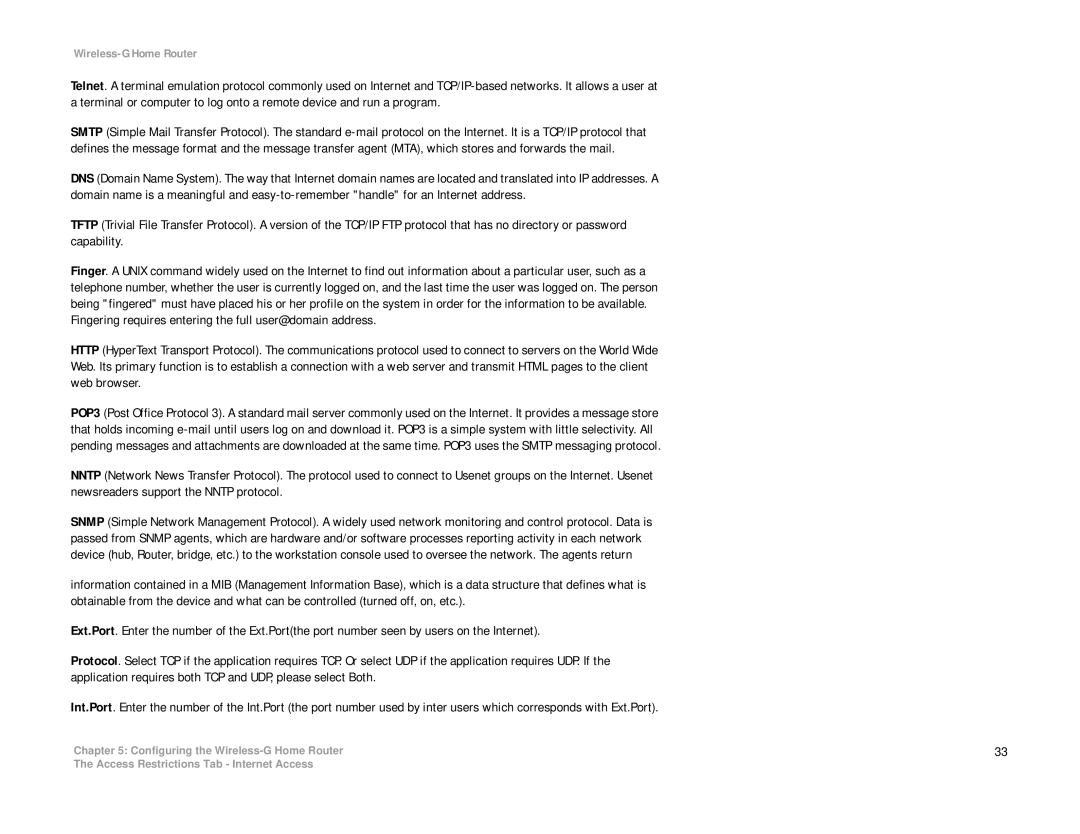Wireless-G Home Router
Telnet. A terminal emulation protocol commonly used on Internet and
SMTP (Simple Mail Transfer Protocol). The standard
DNS (Domain Name System). The way that Internet domain names are located and translated into IP addresses. A domain name is a meaningful and
TFTP (Trivial File Transfer Protocol). A version of the TCP/IP FTP protocol that has no directory or password capability.
Finger. A UNIX command widely used on the Internet to find out information about a particular user, such as a telephone number, whether the user is currently logged on, and the last time the user was logged on. The person being "fingered" must have placed his or her profile on the system in order for the information to be available. Fingering requires entering the full user@domain address.
HTTP (HyperText Transport Protocol). The communications protocol used to connect to servers on the World Wide Web. Its primary function is to establish a connection with a web server and transmit HTML pages to the client web browser.
POP3 (Post Office Protocol 3). A standard mail server commonly used on the Internet. It provides a message store that holds incoming
NNTP (Network News Transfer Protocol). The protocol used to connect to Usenet groups on the Internet. Usenet newsreaders support the NNTP protocol.
SNMP (Simple Network Management Protocol). A widely used network monitoring and control protocol. Data is passed from SNMP agents, which are hardware and/or software processes reporting activity in each network device (hub, Router, bridge, etc.) to the workstation console used to oversee the network. The agents return
information contained in a MIB (Management Information Base), which is a data structure that defines what is obtainable from the device and what can be controlled (turned off, on, etc.).
Ext.Port. Enter the number of the Ext.Port(the port number seen by users on the Internet).
Protocol. Select TCP if the application requires TCP. Or select UDP if the application requires UDP. If the application requires both TCP and UDP, please select Both.
Int.Port. Enter the number of the Int.Port (the port number used by inter users which corresponds with Ext.Port).
Chapter 5: Configuring the | 33 |
The Access Restrictions Tab - Internet Access
